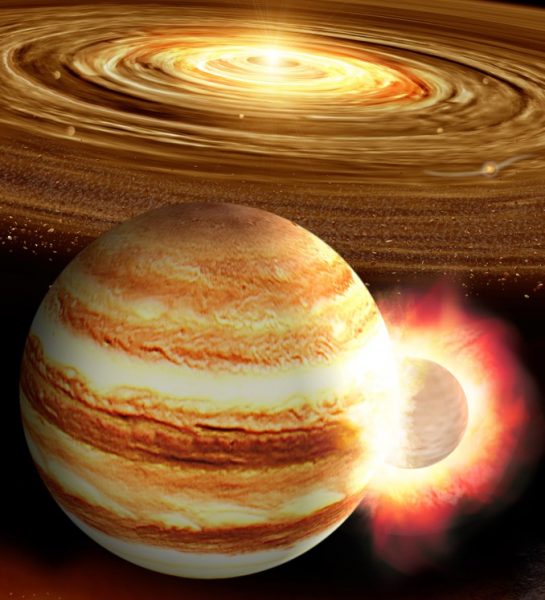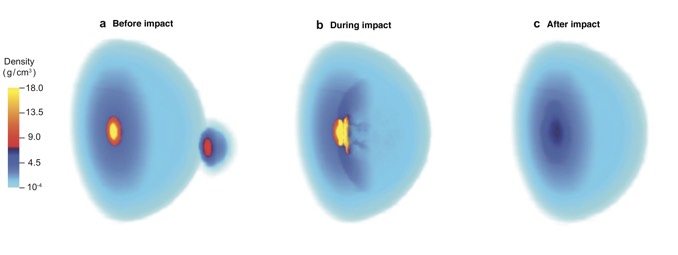A core-warping impact in Jupiter’s past? – Astronomy Now – Astronomy Now Online

Puzzling data from NASA’s Juno probe, indicating Jupiter’s core is less dense and more spread out than expected, could be explained by a cataclysmic head-on collision between the gas giant and a smaller, but still massive planet at the dawn of the solar system 4.5 billion years ago.
Computer simulations carried out by Shang-Fei Liu, an astronomer at Sun Yat-sen University in Zhuhai, China, convinced fellow researcher Andrea Isella of Rice University, originally a skeptic, that an impact scenario “was not so improbable.”
“Because it’s dense, and it comes in with a lot of energy, the impactor would be like a bullet that goes through the atmosphere and hits the core head-on,” Isella said. “Before impact, you have a very dense core, surrounded by atmosphere. The head-on impact spreads things out, diluting the core.”
Liu’s calculation showed an Earth-size proto-planet would not survive an impact and would simply disintegrate in Jupiter’s thick atmosphere. Likewise, a planet hitting Jupiter at a grazing angle likely would become gravitationally trapped and sink into the core.

As for the odds of a head-on collision, the researchers carried out thousands of computer simulations, showing that a fast-growing Jupiter would have perturbed the orbits of nearby protoplanets, with “strong gravitational focusing” making head-on collisions more likely than grazing impacts.
In all cases, Liu says, there was at least a 40 percent chance Jupiter would experience a planetary collision within its first few million years.
“The only scenario that resulted in a core-density profile similar to what Juno measures today is a head-on impact with a planetary embryo about 10 times more massive than Earth,” Liu said.
He added that even if the impact occurred 4.5 billion years ago, “it could still take many, many billions of years for the heavy material to settle back down into a dense core under the circumstances suggested by the paper.”
The research appears in the journal Nature.






